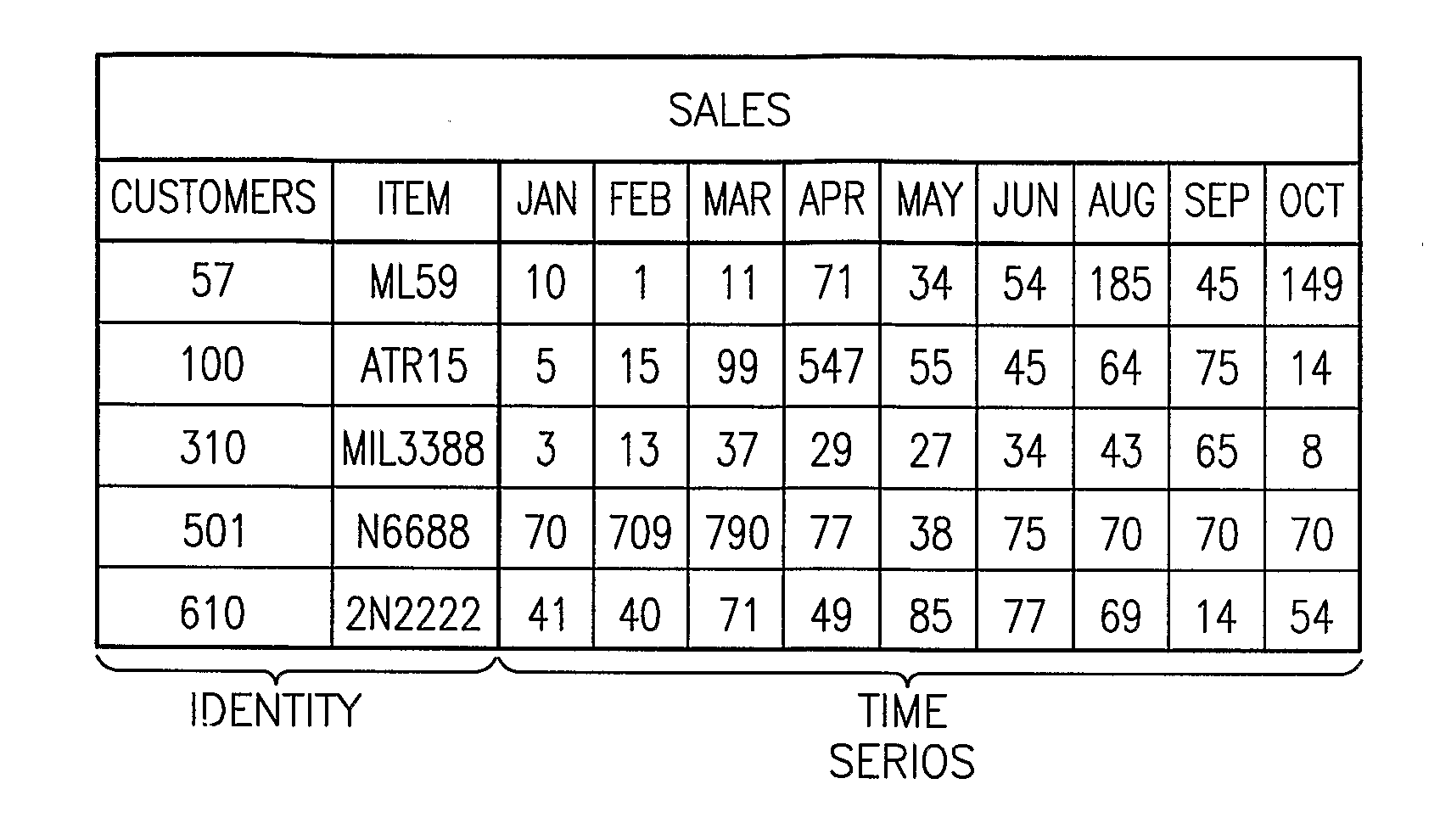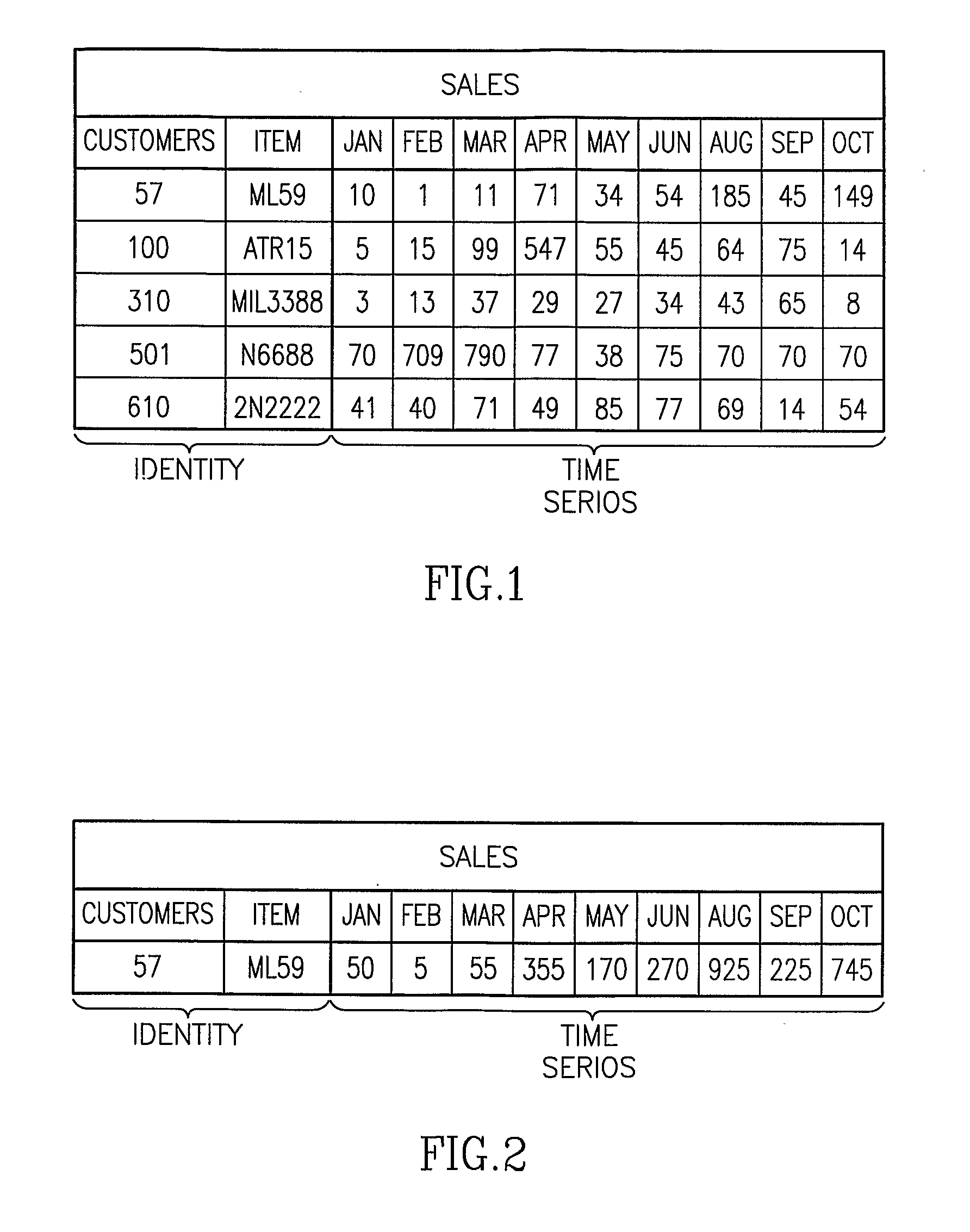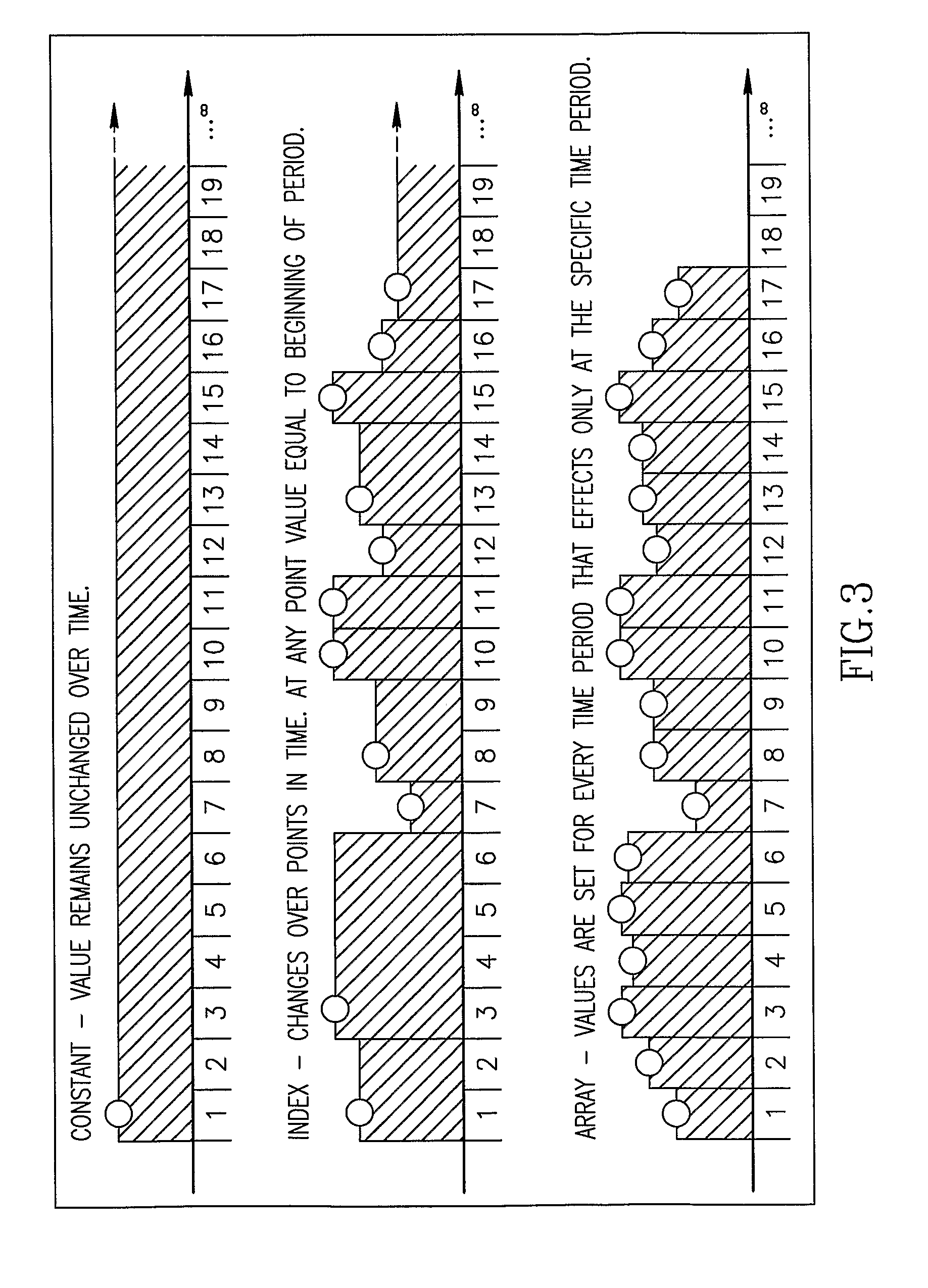Method and System For Managing Data and Organizational Constraints
a technology for managing data and organizational constraints, applied in the field of data and organizational constraints management, can solve the problems of difficult change, difficult to develop, and take a lot of tim
- Summary
- Abstract
- Description
- Claims
- Application Information
AI Technical Summary
Benefits of technology
Problems solved by technology
Method used
Image
Examples
example
[0382]Reference is now made to FIG. 22 which illustrates a row from a monthly table. This row includes sales figures. Note that in this case the number of values is very small (12 values only, one per month). Typically exploratory forecast is only applied when there is much more data.
[0383]FIG. 23 illustrates a 6 month prediction using exponential smoothing. As can be seen, simple exponential smoothing assumes a stationary series, that is, it does not take into account trend and seasonality.
[0384]As can be seen, analyzing the trend is not sufficient. The forecast, in this case, assigns more weight to recent data, from the end of the year, than to early data from the beginning of the year—this is why the forecast for months 13-18 increases. Furthermore, the forecast is linear, which is not necessarily typical for the data.
[0385]To further improve the forecast, the Holt-Winters method, which takes into account both trend and seasonality, may be used. The result for the same data is sh...
PUM
 Login to View More
Login to View More Abstract
Description
Claims
Application Information
 Login to View More
Login to View More - R&D
- Intellectual Property
- Life Sciences
- Materials
- Tech Scout
- Unparalleled Data Quality
- Higher Quality Content
- 60% Fewer Hallucinations
Browse by: Latest US Patents, China's latest patents, Technical Efficacy Thesaurus, Application Domain, Technology Topic, Popular Technical Reports.
© 2025 PatSnap. All rights reserved.Legal|Privacy policy|Modern Slavery Act Transparency Statement|Sitemap|About US| Contact US: help@patsnap.com



